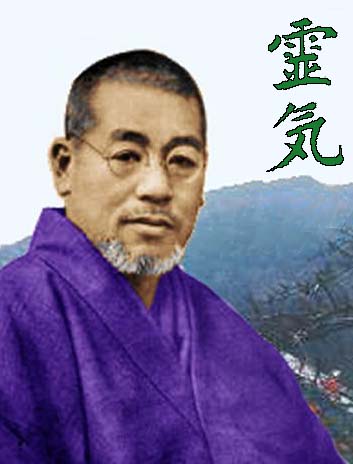What Is Reiki?Kyoto, Japan - Shrine on site where Dr. Usui received Reiki REIKI HISTORY Reiki is a technique developed more than 3,000 years ago that promotes stress reduction and relaxation through the flow of Ki (Chi), or life energy. Through the years, this great healing art was lost, but was revived again in 1914 in Japan by Dr. Mikao Usui. Mikao Usui was born in Japan, in 1865. A bright student, he later traveled to Europe and America, and studied in China. At a low point in his life, he went up on Mt. Kurama to fast and meditate. It was then that he received the ability to use Reiki for healing and to teach others. In following years he treated many people who were injured, sick or in pain. He also taught Reiki to over 2000 students and initiated 16 teachers. One of Dr. Usui's best students was Dr. Chujiro Hayashi, who in turn initiated Mrs. Hawayo Takata. Mrs. Takata lived in Hawaii, and is credited with introducing Reiki to the western world during the mid-1900's. The art of Reiki has spread rapidly since then, with at least 300,000 Reiki masters and over 2,000,000 practitioners in the world today! Mikayo Usui Hawayo Takata Chujiro Hayashi HOW DOES REIKI WORK? Smooth-flowing Ki is essential to a healthy body. When Ki is high and flowing freely, a person is more vibrant and resistant to illness. Deep relaxation of the body and mind encourages the body to use its own natural resources for healing and pain relief. People who are physically well but seek relief from the tension and stress of everyday life, or those who are challenged by imbalances or illness can all benefit from Reiki. Because Reiki adjusts to the needs of the individual person and is a gift of love from the universe, it can never do harm. A tranquil setting with soft music and a comfortable table or chair are optimal for creating a relaxing, harmonizing effect, but Reiki can be done almost anywhere --- in a Reiki studio, office, hospital, or even outdoors. Some of the possible benefits of Reiki include relaxation, stress reduction, pain relief, harmony and balance, mental clarity, a sense of joy and well-being, positive focus, overall wellness, and helping others as a practitioner. Reiki can also be very effective in helping animals, plants and situations. It can be used to treat someone in the same room, or at another location (distance Reiki). While Reiki is not intended to be a substitute for medical care, it can be used in conjunction with existing medical treatments. It may enhance other forms of therapy, and help to minimize side effects.
Japanese Symbol for Reiki |
Akasha Yoga Center, 121 N. Main St. | Crystal Lake, Illinois 60014
Telephone: 847-426-7765
Office Hours - Call For Appointment Times
Copyright 2024 - MassagePlanet.com
Insurance Plus - Massage Magazine - Privacy Notice - Admin




